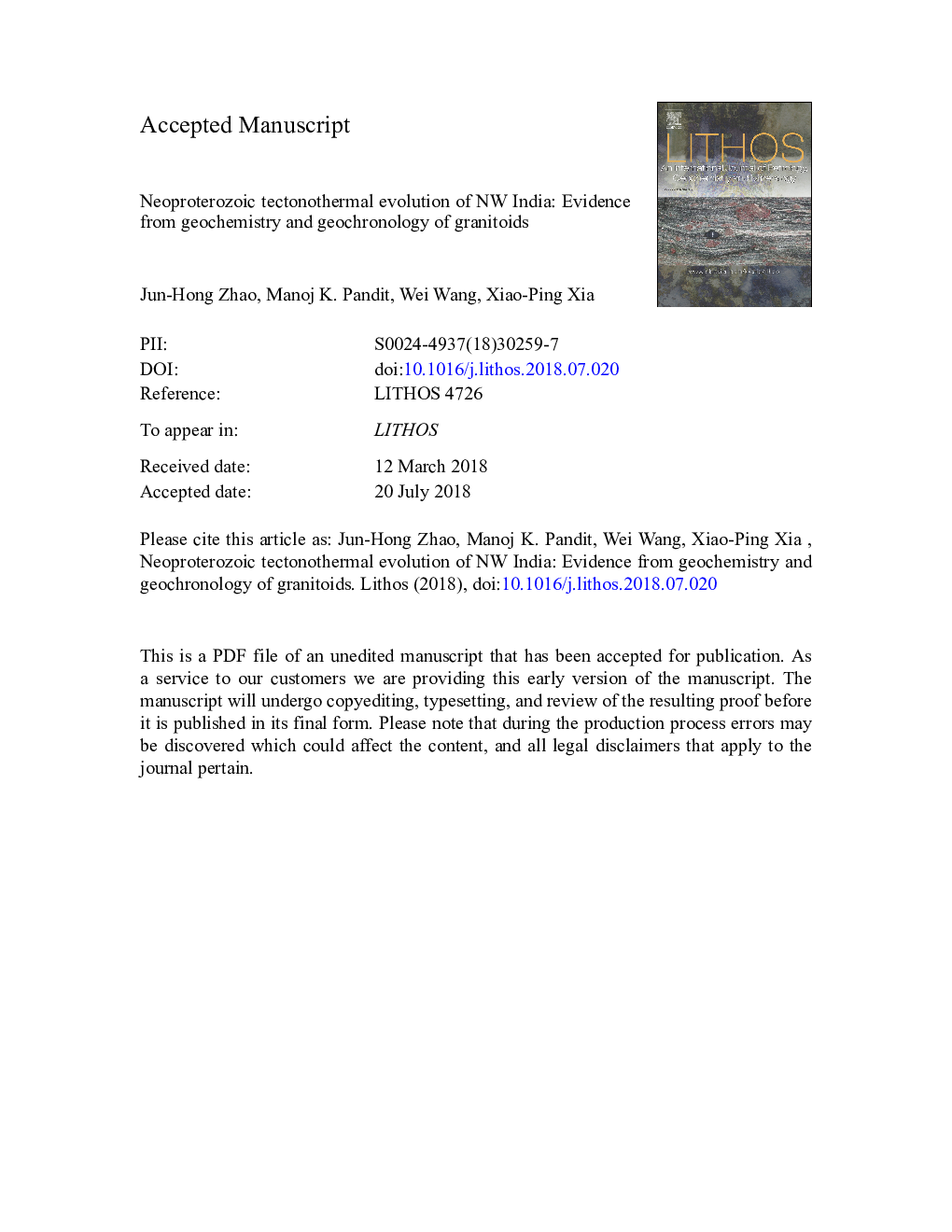| Article ID | Journal | Published Year | Pages | File Type |
|---|---|---|---|---|
| 8911525 | Lithos | 2018 | 56 Pages |
Abstract
Neoproterozoic granitoids from the Delhi Fold Belt in NW India record formation and evolution of the marginal orogen in the Rodinia supercontinent. The ca. 976â¯Ma Moras I-type granites show variable SiO2 (67.15-75.87â¯wt%) and CaO (1.10-3.24â¯wt%) and low REE (59-196â¯ppm). Their spider diagram is characterized by enrichment of Rb, Th and U and depletion of Na and Ta with positive Pb and negative Sr and Ti anomalies. They have positive εNd(t) (+0.41 to +1.40) and εHf (+2.34 to +9.35) and moderate δ18O values (6.48â° to 7.58â°). These features suggest that the Moras granites were produced by melting of the juvenile mafic curst. However, the ca. 811â¯Ma Pali and ca. 780â¯Ma Mirpur A-type granites have high SiO2 (74.42-78.63â¯wt%), K2Oâ¯+â¯Na2O (7.74-8.95â¯wt%) and REE (266-334â¯ppm). Their spider diagrams are more enriched in Rb, Th and U and depleted in Ba, Sr and Ti. They have lower εNd (â2.28 to +0.84) and εHf values (â2.31 to +8.62) than, but similar δ18O (5.77â° to 7.01â°) to those of the Moras granites, suggesting that the A-type granites were partial melts of the dehydrated mafic crust in a rift setting. The I- and A-type granites in NW India resulted from physicochemical variations of the lithosphere during evolution of the Rodinia. The Neoproterozoic igneous and sedimentary rocks from the Delhi Fold Belt are well correlated with those from the Jiangnan Fold Belt in South China, suggesting that the two belts probably collected together in the configuration of the Rodinia supercontinent.
Related Topics
Physical Sciences and Engineering
Earth and Planetary Sciences
Geochemistry and Petrology
Authors
Jun-Hong Zhao, Manoj K. Pandit, Wei Wang, Xiao-Ping Xia,
